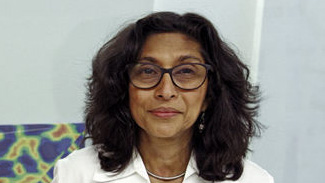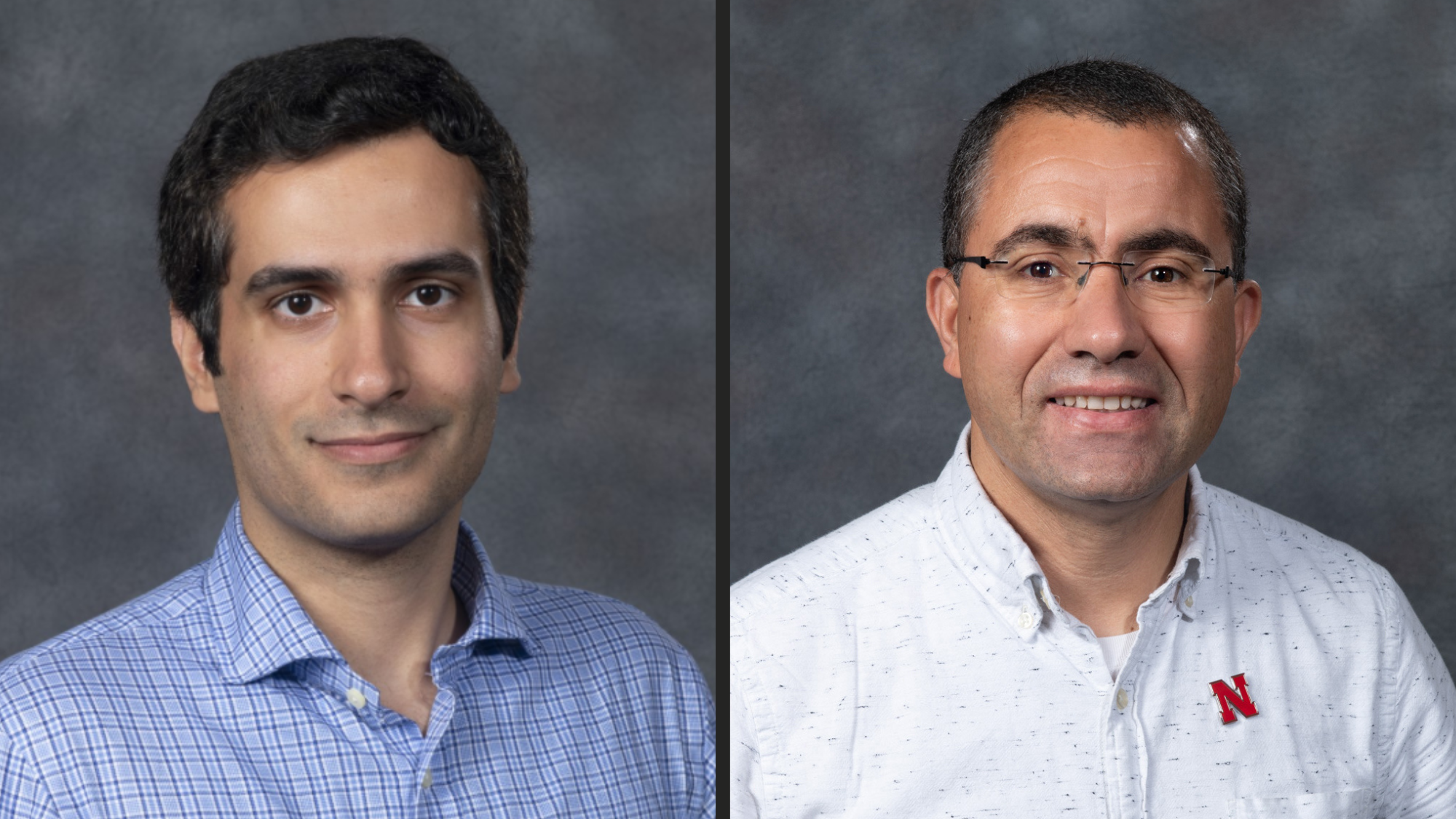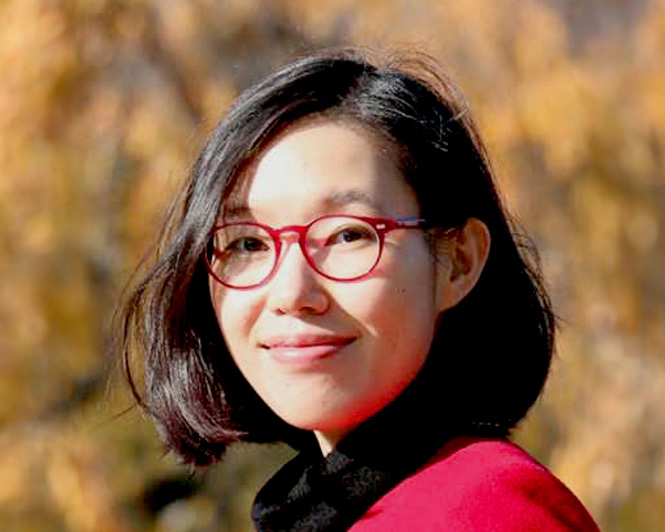Year 3 SEED Grant
Physics and Astronomy
Shireen Adenwalla
STRAIN DRIVEN SKYRMIONS IN THIN FILM HETEROSTRUCTURES
Abstract: This proposal investigates the interaction mechanisms between oscillating strain waves and skyrmions. Unlike traditional magnetic field and electric current driven approaches, strain-based surface acoustic waves resonating at gigahertz frequencies will be used, measuring responses as functions of frequency and amplitude, and as functions of thin film magnetic properties. Specifically, we are interested in thin films with controllable pinning densities, so as to disentangle the effects of local anisotropy variations and those arising from the surface acoustic waves. High spatial and temporal resolution will allow us to see down to the shortest relevant time and spatial scales. This panoramic experimental view will allow us to answer several fundamental questions about the interaction mechanisms of strain driven magnetic textures, that could deviate substantially from the current and field driven mechanisms. This work fits within EQUATE FRG1, Quantum Materials and will expand the scope of Research Thrust 1, Correlation, Topological and Emergent Phenomena in Quantum Materials.

Year 2 SEED Grants
Physics and Astronomy
Martin Centurion
CHARACTERIZATION OF THE ULTRAFAST STRUCTURAL RESPONSE IN PHOTOEXCITED MATERIALS
Abstract: In this project, we will use ultrafast electron diffraction to characterize the structural dynamics induced by optical excitation. We will initially focus on materials that exhibit an ultrafast change in ferroelectricity triggered by proton transfer: Croconic acid and 5,6-dichloro-2-methylbenzimidazole (DC-MBI), both of which can be fabricated locally. The proton transfer process involves coupling of the electronic and nuclear degrees of freedom, and tunneling of the proton, an intrinsically quantum mechanical process. Additionally, the method of ultrafast electron diffraction is unique in that it captures structural changes in femtosecond time scales, and is thus complementary to other characterization methods already available at UNL. This method could be used to characterize new quantum materials developed for quantum sensing and quantum technologies, thus enhancing the research capacities of EQUATE.

Mechanical and Materials Engineering
Mohammad Ghashami (PI), Abdelghani Laraoui (Co-PI)
QUANTUM SIZE EFFECT ON RADIATIVE AND ELECTRONIC TRANSPORT
Abstract: The study of thermal transport at the nanoscale is of critical importance for the development of novel nanoelectronic devices and holds promise to unravel quantum phenomena that have no classical analogs. For instance, transport properties of atomic-scale systems – such as electrical conductance, shot noise, thermopower, and Joule heating – are entirely dominated by quantum effects, even at room temperature. Therefore, they drastically differ from those of macroscale devices. Unfortunately, the experimental study of thermal transport in these systems constitutes a formidable challenge and has remained elusive despite its fundamental interest. This project will use quantum sensors based on nitrogen vacancy in diamond to elucidate the fundamental mechanisms underlying photon and electron transport within the micro/nanoconfinements, particularly between nanostructured surfaces and 2D materials (e.g., hBN and WSe2). For this aim, we will conduct rigorous characterizations at the atomic level and precision energy flux measurements at the nanoscale to unfold the governing physics of energy transfer at a quantum device level. This research can bring the scientific community closer to realizing technological breakthroughs in computation, sensing, energy, and other related fields. Moreover, the interdisciplinary nature of the proposed research provides excellent training for students and prepares them to join multiple high-tech sectors, to the public and economic benefits of Nebraska. This work also aligns with the Science and Technology Implementation plan of the Nebraska EPSCoR office by investing in human infrastructure to expand research capacity in emerging areas of quantum, energy science, and technology.

Year 1 SEED Grants
Chemical and Bimolecular Engineering
Siamak Nejati
Heterostructures of 2D Materials and Porphyrin-Based Covalent Organic Frameworks as a Tunable Device Platform for Quantum Technologies.
Siamak Nejati of University of Nebraska-Lincoln (UNL) Chemical and Biomolecular Engineering proposed “Heterostructures of 2D Materials and Porphyrin-Based Covalent Organic Frameworks as a Tunable Device Platform for Quantum Technologies.” Nejati will work with UNL Chemistry’s Alex Sinitskii on this research.

Electrical and Computer Engineering
Yanan (Laura) Wang
Dynamic Control of 2D Single-Photon Quantum Emitters via Strain Engineering
Yanan “Laura” Wang of UNL Electrical and Computer Engineering (ECE) proposed “Dynamic Control of 2D Single-Photon Quantum Emitters via Strain Engineering.” She will work with UNL ECE colleague Christos Argyropoulos, who is an investigator on the EQUATE project.

Publications
Seed Grant SIs (2022) (Faculty: Martin Centurion and Mohammad Ghashami)
- Chace Franey, Bakir M. Al-Ameri, Greg I. Acosta and Mohammad Ghashami, “Enhancement of thermionic power generation via engineered microstructures,” Phys. Rev. Applied 21, 024004 (Pgs. 1-9) (2024); DOI: https://doi.org/10.1103/PhysRevApplied.21.024004.
Seed Grant SIs (2021) (Faculty: Siamak Nejati and Yanan (Laura) Wang)
- Sanchaya Pandit and Yanan Wang, “Cavity Quantum Electrodynamics based on Lifetime-Limited Emission in Hexagonal Boron Nitride,” 2023 IEEE Photonics Conference (IPC), November 12-16, 2023, Added to IEEE Xplore December 25, 2023; DOI: 10.1109/IPC57732.2023.10360483.
- Yanan Wang, Jaesung Lee and Philip X.-L. Feng, “Perspectives on phononic waveguides for on-chip classical and quantum transduction,” Appl. Phys. Lett. 124 (7), 070502 (Pgs. 1-13) (2024); https://doi.org/10.1063/5.0176867.
- Syed Ibrahim Gnani Peer Mohamed, Shahriar Namvar, Tan Zhang, Hessam Shahbazi, Zhen Jiang, Andrew M. Rappe, Amin Salehi-Khojin and Siamak Nejati, “Vapor-Phase Synthesis of Electrocatalytic Covalent Organic Frameworks,” Adv. Mater. 36, 2309302 (Pgs. 1-9) (2024); https://doi.org/10.1002/adma.202309302.
- Bo Xu, Pengcheng Zhang, Jiankai Zhu, Zuheng Liu, Alexander Eichler, Xu-Qian Zheng, Jaesung Lee, Aneesh Dash, Swapnil More, Song Wu, Yanan Wang, Hao Jia, Akshay Naik, Adrian Bachtold, Rui Yang, Philip X.-L. Feng and Zenghui Wang, “Nanomechanical Resonators: Toward Atomic Scale,” ACS Nano 16 (10), 15545–15585 (2022); https://doi.org/10.1021/acsnano.2c01673.